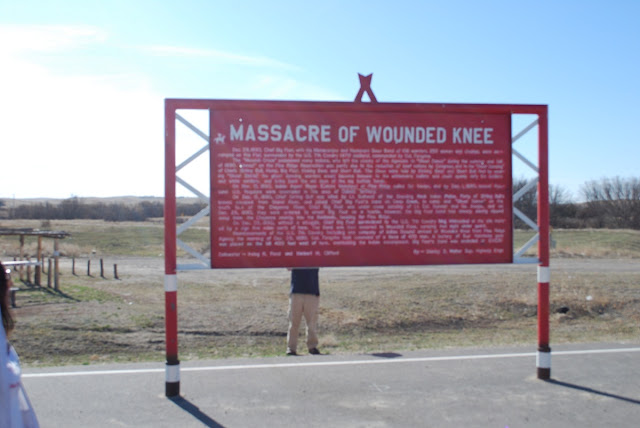My team one was in the kitchen helping get breakfast ready. I was in charge of toast, running bread through the conveyor belt toaster. I must say that I took to it readily. Everyone had toast who wanted it.
After breakfast was the first Wisdom of the Elders talk from Ted. My notes form that morning are a little sketchy and quickly written, but he talked about Ceremony being very important to the people, as that was how the instructions on how to live were passed down. The Wisdom Keepers, who encouraged their people to listen to the knowledge and follow the sacred ways. One of the elders, when confronted with those who wanted to change his religion said that all of nature was his church and that they were all a part of it. That they lived and slept in their church and walked on their sacred paths all day, every day.
Ted also introduced us to the old wisdom of Mitakuye Oyasin, which means 'we are all related'. That everything is related. Rocks, trees, animals, humans. We are all interconnected and can live easily if we take care of each other.
He reminded us again to slow down and listen. And today we would have ample time for that.
After a brief history lesson, we piled into the bus and a van to head for Wounded Knee. It was a short drive and soon we were climbing the hill to the cemetery.
Dakota Highhawk joined us just outside of the cemetery to tell us the history of Wounded Knee. He is a descendant of Big Foot, Red Cloud, and the Highhawk listed on the monument in the cemetery. After his talk, he opened the cemetery to us, and I went to talk to him a little more. He spoke of some of the atrocities perpetrated by the 7th Cavalry that day and said that it was motivated by revenge for Custer's death.
I walked the cemetery first and noticed the plethora of people far too young to be in a graveyard. I walked around the mass grave site of the massacre victims and thought about the women and kids that were indiscriminately slaughtered, then piled in there, a few of them still alive but seriously wounded. I saw the grave of Lost Bird, a baby found on the "battlefield" in her dead mother's arms, and the raised by General Colby to be a trophy to be shown off. She would kill herself 28 years later. I wondered what happened to the three other babies found on the plains after that day.
Just beyond the road was where the Sioux camp was. I took this picture from the cemetery hill, where the cannons were placed. The rise to my immediate right held another battery of the deadly artillery.
The building there was built where the 7th had their "council fire" to talk to the Indians. The flats to the left are where the troopers were camped and spent the night drinking and getting ready for the next day.
Then I walked the ravines where the women and children tried to escape while the men used their bodies as human shields to try to give them time to get away. They were chased for two hours. Hunted down and executed. Some children that were hiding were told to come out and that they would be safe. When they emerged, they were slaughtered.

I've been to battlefields before, where two sides fought each other for one reason or another. But this was my first visit to a massacre site. It was no battle. The 7th had Hotchkiss cannons. They had disarmed the Indians. Even with the few guns that the Sioux had hidden, there was no tactical reason whatsoever to fight here.
I had read in many history books the accounts of soldiers who had been drinking through the night before that day. There was every evidence that most of the wounds and fatalities suffered by the 7th that day were the results of friendly fire.
As I climbed from the ravines, I met Curt, a local who was selling some beadwork and other things. He and I got to talking and he told me that this was a revenge killing of unbelievable cruelty. The families of survivors had passed down the stories, and he told me now of soldiers tossing babies into the air to use for "skeet" shooting. Of genitals being cut off and used as trophies. Of people trying to surrender and being shot for their troubles. And the white soldiers had the gall to call the Indians "savages".
Later, twenty Congressional Medals of Honor were conferred on soldiers from that massacre. This is a disgrace to the Sioux and a disgrace to any current or prior service military that know what those medals are usually given for. There are petitions to be signed trying to revoke these medals. You can find them if you look. But I would encourage you to visit Wounded Knee. Talk to the locals. The descendants of those killed there. Ask them what you can do. You may be surprised at the answers.
If you can't find a petition or don't want to visit the site. Then just write your government officials and ask them if they have gone there, and what can be done to restore honor to the CMOH, the Sioux and help the healing that still needs to happen there.
It was a very powerful place. Lots of sadness there, but lots of beauty as well. I'll return again.
More Later










No comments:
Post a Comment